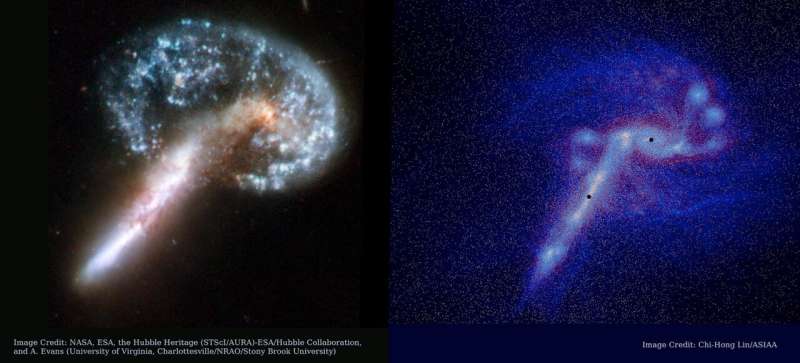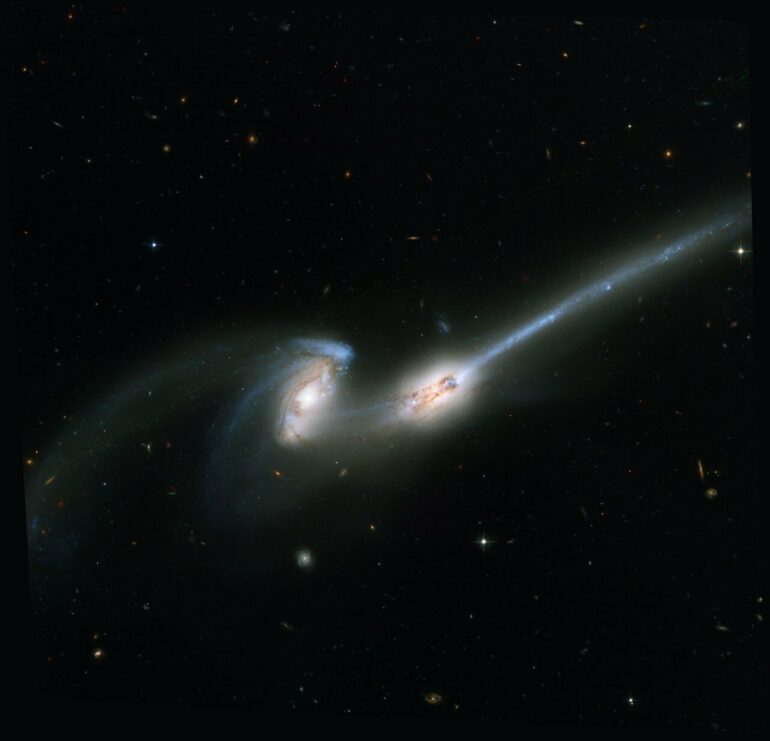With breakthroughs in astronomical observation, scientists now have confirmed the existence of supermassive black holes at the centers of galaxies. The recent release of black hole images has further charged people’s curiosity about black holes while providing additional evidence to support Einstein’s general theory of relativity.
These supermassive black holes range in mass from millions to billions of solar masses. Astonishingly, some of these black holes have formed less than a billion years after the Big Bang. Understanding how these black holes formed and grew to such enormous mass in such a short period of time has always been an important topic in modern astrophysics.
A research team composed of Chi-Hong Lin and Ke-Jung Chen from the Institute of Astronomy and Astrophysics, Academia Sinica (ASIAA) and Chorng-Yuan Hwang from the Institute of Astronomy at National Central University has made significant new advances in the formation theory of supermassive black holes. The research results have been published in The Astrophysical Journal.
The team used high-resolution simulations of galaxy mergers to investigate the growth of supermassive black holes and their impact on the host galaxies. By introducing a new model of molecular clouds, they found that the growth of black holes primarily occurs through the accretion of molecular clouds during galaxy mergers.
Due to the dynamics of gravitational forces, massive molecular clouds can efficiently fall into the galactic center compared to neutral and ionized gases, rapidly increasing the formation rate of stars in the galaxy and providing the necessary nutrients for the rapid growth of the black hole.
This allows black holes that originally had only a few million solar masses to grow to billions of solar masses within a few hundreds of millions of years, successfully explaining the observed properties of merging galaxies and their black holes.

(Left) Arp 148 is a galaxy with a peculiar structure formed after the collision of two galaxies, where a large amount of material falls into the center of the galaxies, giving rise to its unique appearance. © NASA, ESA, the Hubble Heritage Team. (Right) A simulation of the formation of Arp 148. When two disk galaxies collide head-on, a significant amount of molecular clouds is accreted into the central region, providing fuel for the central black hole. Simultaneously, this process triggers a burst of star formation in the central region of the galaxy. These simulation results match well with the observed features of Arp 148. © Chi-Hong Lin/ASIAA
“This research demonstrates the possible mechanism for the rapid growth of black holes and reveals the importance of molecular clouds in merging galaxies,” said Ke-Jung Chen.
“Our research results can offer people a more deeper understanding of galaxy evolution. We anticipate that there will be more observational results to verify our conclusion,” said the lead author Chi-Hong Lin.
More information:
Chi-Hong Lin et al, Rapid Growth of Galactic Supermassive Black Holes through Accreting Giant Molecular Clouds during Major Mergers of Their Host Galaxies, The Astrophysical Journal (2023). DOI: 10.3847/1538-4357/acd841
Provided by
Academia Sinica, Institute of Astronomy & Astrophysics
Citation:
New advances in formation theory of supermassive black holes (2023, July 24)



